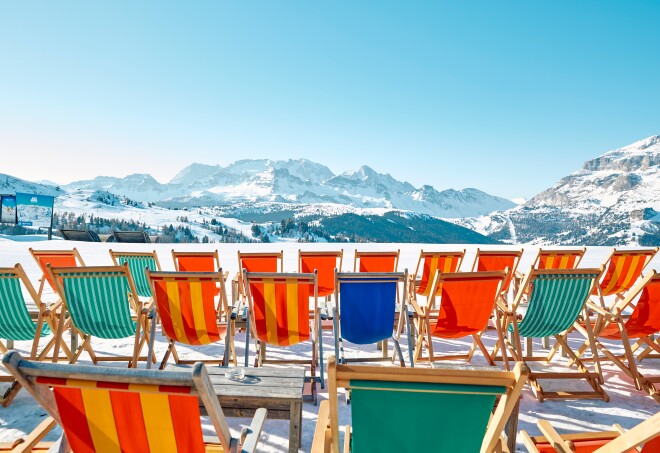Overview
When’s the best time to go to Colombia?
Being so close to the equator, Colombia lacks defined seasons; the elevation—more than the calendar—determines the weather. Higher altitudes are chilly enough for a thick sweater and the steamy lowlands have tropical weather year-round. The period between mid-December and March tends to be drier, the skies bluer. December and January are also the height of the local holiday season, so major destinations, especially on the Caribbean, can get a bit crowded.
Events
- Bogota’s Expo-Artesanías fair, which features exquisitely crafted and curated handicrafts from all over the country, starts in mid-December.
- The Feria de Cali is a music, food, and culture extravaganza held yearly from Christmas Day to December 30, which features parades, bullfights, sporting events, and concerts.
- For nine days in early January, Cartagena’s International Music Festival uses the city’s spectacular architecture as a backdrop for dozens of concerts by internationally renowned classical musicians.
- The Carnaval de Negros y Blancos, in the southern city of Pasto from late December to early January, is an explosion of color and joy that includes float-filled parades and a full calendar of parties and events.
- Cartagena’s Hay Literature and Arts Festival is a four-day event showcasing literature, politics, and journalism, in talks and conferences (many in English) that could even include the latest Nobel laureate for literature.
- The Carnival at Barranquilla, though smaller than the celebration in Rio de Janeiro, is a boisterous blowout nonetheless, complete with beauty queens, parades, spectacular costumes, dancing till dawn and a great deal of drinking.
How to get around Colombia
Major airlines fly to Bogotá, Medellín, Cali, and Barranquilla from many U.S., Latin American, and European cities. When in Colombia, you can take domestic flights from city to city and and areas further afield. Highways are generally safe and renting cars is becoming more common, but driving distances can be deceptive, especially if you’re stuck behind a truck slogging through the mountains on a single-lane highway. Hiring a driver to go from one town to the next is a convenient, not-overly-extravagant indulgence. Intercity buses provide more scenery but run the gamut, ranging from decent drivers and ample comforts to bumpy jalopies going far too fast. Always purchase the highest grade of service available.
Can’t miss things to do in Colombia
The Gold Museum and the view from Monserrate in Bogotá; watching the sunset from Cartagena’s ancient ramparts; exploring Parque Tayrona near Santa Marta.
Food and drink to try in Colombia
One of the first things Colombians will ask is whether you like the food; it’s important to them you do. And while traditional Colombian cuisine skews to meat-and-potatoes, the culinary scene in bigger cities has burst to life in recent years, jazzing up traditional favorites.
Regional specialties include Bogotá’s signature potato soup, ajiaco; the belt-busting bandeja paisa in Medellín (it includes pork crackling, avocado, grilled banana patties, rice, beans); Barranquilla’s cheese-and-yam mote de queso; and piangua mollusk in coconut sauce, served almost everywhere on the Pacific coast. Try amazing juices made from local fruits like lulo, feijoa, tomate de árbol, curuba (banana-passionfruit), starfruit, tamarind, plus dozens of other flavors. Local breads made from cassava or corn flour and cheese, such as pan de bono, pan de yuca, or almojábanas are heavenly. Not least of all, each region has its own version of the arepa, a fabulous cornmeal bread, buttered and filled with sundry goodies. In Antioquia, they are thin and mild, to temper the region’s intense flavors; in and around Bogotá, they come filled with gooey cheese; the Santander iteration is toasty, often peppered with bits of chicharrón.
Culture in Colombia
Colombia’s cultural landscape is as varied as its geography; listening to each region’s music is a great lens through which to see the differences. Cali is the epicenter of thrilling Colombian salsa music and dance; Valledupar is the vallenato capital; the Pacific coast has its chirimía and currulao; and the Caribbean is home to champeta, cumbia, and mapale. The Andean region is known for bambuco and the Llanos for joropo. Somewhat incongruously, Medellín has a strong tango tradition (though the genre originated in Argentina). In recent years, musicians like La Mojarra Eléctrica, Systema Solar, Curupira, Herencia de Timbiquí, ChoqQuibTown, or Bomba Estereo have injected edgy, urban rhythms into these venerable folk traditions.
For Families
Colombia is very child-friendly. Colombians love to travel in big family groups with everyone from the grandparents to infants and many travel destinations for domestic tourists revolve around entertaining the kids. Amusement parks include Hacienda Nápoles, once the sprawling estate of famed drug lord Pablo Escobar, which has been transformed into a safari-type park with wild animals—including the African hippos Pablo imported for his pleasure—and rides. Other amusement parks include Parque del Café in the coffee triangle, Mundo Aventura and Parque Salitre in Bogotá, and Parque Jaime Duque just north of the capital. Interactive museums are another hit for families with children including Maloka in Bogotá and Parque Explora in Medellín.
Local Resources
Practical Information
Just about everybody in Colombia speaks Spanish, though it’s not the country’s only language. Along with about 70 indigenous languages, including Arhuaco and Quechuan, there are two forms of Creole—one a blend of English and Spanish, the other is Spanish-based.
No need for adapters, Colombia’s electric outlets run at 110 volts.
Guide Editor
Sibylla Brodzinsky is a Bogotá-based freelance reporter and author who has spent more than 20 years writing on Latin American politics, human rights and social issues, and is the Colombia correspondent for both The Economist and The Guardian. She is co-editor of Throwing Stones at the Moon (McSweeney’s, 2012), a compilation of oral histories from Colombians displaced by violence.








